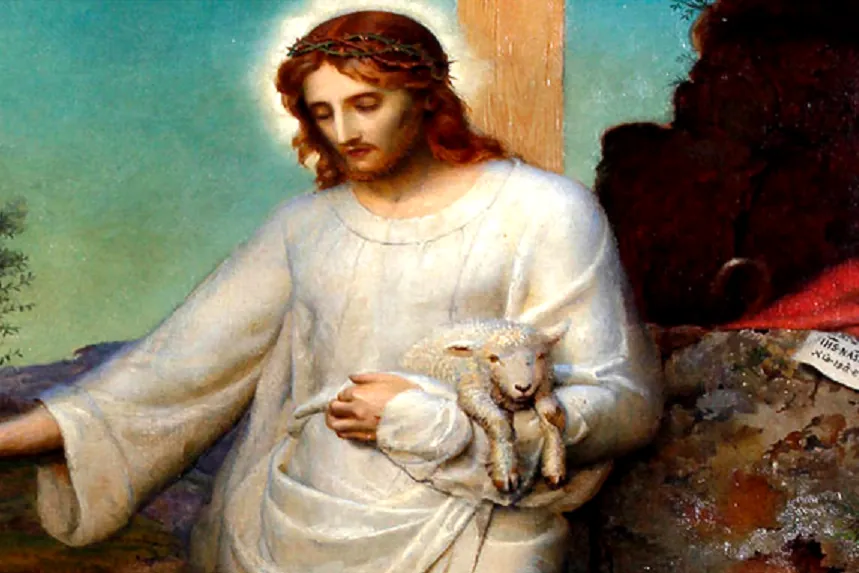 Detail from Sybil Parker’s “The Door of the Fold” (1895)
Detail from Sybil Parker’s “The Door of the Fold” (1895)
Shepherding and Synodality
“Now all tax collectors and sinners were coming near to listen to him. And Pharisees and scribes were grumbling and saying, “this fellow welcomes sinners and eats with them.” So he told them this parable: “Which one of you, having a hundred sheep and losing one of them, does not leave the ninety-nine in the wilderness and go after the the one that is lost until he finds it? When he has found it, he lays it on his shoulders and rejoices. And when he comes home, he calls together his friends and neighbors, saying to them, ‘Rejoice with me, for I have found my sheep that was lost.’ Just so, I tell you, there will be more joy in heaven over one sinner who repents than over ninety-nine righteous persons who need no repentance.” (Luke 15:1-7)
How to be good shepherds in the spirit of synodality?
The parable of the lost sheep is worth reflecting as to responding and living the call to be good shepherds. It depicts images relevant to the call of true shepherding and synodality in the Church today.
Synodality is about communion and journeying together. As stated, “A synodal Church cannot be understood other than within the horizon of communion, which is always a mission to proclaim and incarnate the Gospel in every dimension of human existence.” Therefore, synodality and shepherding are two distinct but related aspects of the Church. In this sense, it is inviting all members of the Church today to go back to the ancient yet a relevant image of the Church especially in living the call to communion and shepherding.
The relevant images depicting relatable situations inspired by the Gospel pericope.
First, a shepherd whose heart is happy in searching for the lost, the least, and the last in the community. The needs of the abandoned and astray are always given priority in serving. The joy in the heart impels the shepherd to constantly search for those in the peripheries and brings them back into the fold. The interest is on how these people can be nurtured with the richness of the Gospel. Today, it could not be denied that there are many who are becoming indifferent into the Church because of the unanswered situations of those in the peripheries and of those influenced by the principles of atheism and secularism.
Second, a shepherd whose heart is happy in working with a team. This is understood as a counter-culture in the world so immersed with individualism and separation. As observed, many are becoming dominant and aggressive to be “lone-rangers” but forgetting the basic truth that we are “social beings” whose particular concern for the needs of people must be always valued. This kind of shepherd loves to be with people and puts importance to the growth of each one in the community. His heart desires for each one as member of the bigger community.
Third, a shepherd whose heart is BIG and always happy in forgiving. This kind of shepherd finds joy in forgiving despite the pain caused by negative attitudes and actions. He joyfully carries on his shoulders those who are difficult to love, to forgive and to be taken care of.
Jesus exemplifies to us the true character of a good shepherd. He says, “I am the good shepherd. The good shepherd lays down his life for the sheep.” As the Good Shepherd, Jesus is always happy in finding the lost, the least and the last. He is also happy in working and saving people particularly those who are in need of his mercy and compassion. And he has a BIG heart in forgiving. Through these, Jesus also shows to us the true image of synodality.
Let us be good shepherds!
(Fr. Loy Mahinay)


No Comments